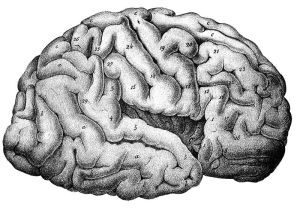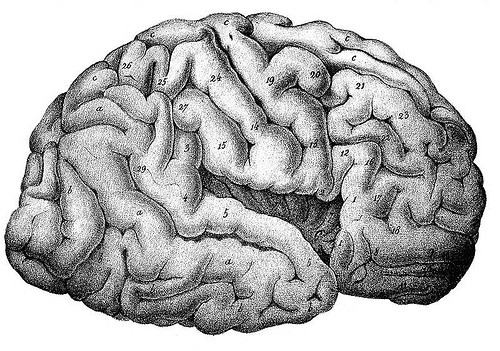
University of California – San Francisco—The human cerebral cortex contains 16 billion neurons, wired together into arcane, layered circuits responsible for everything from our ability to walk and talk to our sense of nostalgia and drive to dream of the future. In the course of human evolution, the cortex has expanded as much as 1,000-fold, but how this occurred is still a mystery to scientists.
Now, researchers at UC San Francisco have succeeded in mapping the genetic signature of a unique group of stem cells in the human brain that seem to generate most of the neurons in our massive cerebral cortex.
The new findings, published Sept. 24, 2015 in the journal Cell, support the notion that these unusual stem cells may have played an important role in the remarkable evolutionary expansion of the primate brain.
“We want to know what it is about our genetic heritage that makes us unique,” said Arnold Kriegstein, MD, PhD, professor of developmental and stem cell biology and director of the Eli and Edyth Broad Center of Regeneration Medicine and Stem Cell Research at UCSF. “Looking at these early stages in development is the best opportunity to understand our brain’s evolution.”
Building a Brain from the Inside Out
The grand architecture of the human cortex, with its hundreds of distinct cell types, begins as a uniform layer of neural stem cells and builds itself from the inside out during several months of embryonic development.
Until recently, most of what scientists knew about this process came from studies of model organisms such as mice, where nearly all neurons are produced by stem cells called ventricular radial glia (vRGs) that inhabit a fertile layer of tissue deep in the brain called the ventricular zone (VZ). But recent insights suggested that the development of the human cortex might have some additional wrinkles.
In 2010, Kriegstein’s lab discovered a new type of neural stem cell in the human brain, which they dubbed outer radial glia (oRGs) because these cells reside farther away from the nurturing ventricles, in an outer layer of the subventricular zone (oSVZ). To the researchers’ surprise, further investigations revealed that during the peak of cortical development in humans, most of the neuron production was happening in the oSVZ rather than the familiar VZ.
oRG stem cells are extremely rare in mice, but common in primates, and look and behave quite differently from familiar ventricular radial glia. Their discovery immediately made Kriegstein and colleagues wonder whether this unusual group of stem cells could be a key to understanding what allowed primate brains to grow to their immense size and complexity.
“We wanted to know more about the differences between these two different stem cell populations,” said Alex Pollen, PhD, a postdoctoral researcher in Kriegstein’s lab and co-lead author of the new study. “We predicted oRGs could be a major contributor to the development of the human cortex, but at first we only had circumstantial evidence that these cells even made neurons.”
__________________________________________
Drawing of the cerebral cortex. Wikimedia Commons, Wellcome Images
_____________________________________________________________
Outsider Stem Cells Make Their Own Niche
In the new research, Pollen and co-first author Tomasz Nowakowski, PhD, also a postdoctoral researcher in the Kriegstein lab, partnered with Fluidigm Corp. to develop a microfluidic approach to map out the transcriptional profile – the set of genes that are actively producing RNA – of cells collected from the VZ and SVZ during embryonic development.
They identified gene expression profiles typical of different types of neurons, newborn neural progenitors and radial glia, as well as molecular markers differentiating oRGs and vRGs, which allowed the researchers to isolate these cells for further study.
The gene activity profiles also provided several novel insights into the biology of outer radial glia. For example, researchers had previously been puzzled as to how oRG cells could maintain their generative vitality so far away from the nurturing VZ. “In the mouse, as cells move away from the ventricles, they lose their ability to differentiate into neurons,” Kriegstein explained.
But the new data reveals that oRGs bring a support group with them: The cells express genes for surface markers and molecular signals that enhance their own ability to proliferate, the researchers found.
“This is a surprising new feature of their biology,” Pollen said. “They generate their own stem cell niche.”
The researchers used their new molecular insights to isolate oRGs in culture for the first time, and showed that these cells are prolific neuron factories. In contrast to mouse vRGs, which produce 10 to 100 daughter cells during brain development, a single human oRG can produce thousands of daughter neurons, as well as glial cells–non-neuronal brain cells increasingly recognized as being responsible for a broad array of maintenance functions in the brain.
New Insights into Brain Evolution, Development and Disease
The discovery of human oRGs’ self-renewing niche and remarkable generative capacity reinforces the idea that these cells may have been responsible for the expansion of the cerebral cortex in our primate ancestors, the researchers said.
The research also presents an opportunity to greatly improve techniques for growing brain circuits in a dish that reflect the true diversity of the human brain, they said. Such techniques have the potential to enhance research into the origins of neurodevelopmental and neuropsychiatric disorders such as microcephaly, lissencephaly, autism and schizophrenia, which are thought to affect cell types not found in the mouse models that are often used to study such diseases.
The findings may even have implications for studying glioblastoma, a common brain cancer whose ability to grow, migrate and hack into the brain’s blood supply appears to rely on a pattern of gene activity similar to that now identified in these neural stem cells.
“The cerebral cortex is so different in humans than in mice,” Kriegstein said. “If you’re interested in how our brains evolved or in diseases of the cerebral cortex, this is a really exciting discovery.”
The study represents the first salvo of a larger BRAIN Initiative-funded project in Kriegstein’s lab to understand the thousands of different cell types that occupy the developing human brain.
“At the moment, we simply don’t have a good understanding of the brain’s ‘parts list,'” Kriegstein said, “but studies like this are beginning to give us a real blueprint of how our brains are built.”
______________________________________________________
Source: University of California-San Francisco press release.
Major funding for the research was provided by the National Institutes of Health, the UCSF Clinical and Translational Science Institute, and the Damon Runyon Cancer Research Foundation.
Additional authors on the study are Jiadong Chen, PhD; Hanna Retallack; Carmen Sandoval-Espinosa; Cory Nicholas, PhD; S. John Liu; Michael Oldham, PhD; Aaron Diaz, PhD; and Daniel Lim, MD, PhD, all of UCSF; and Anne Leyrat, PhD; Joe Shuga, PhD; and Jay West, PhD, of Fluidigm Corp. Nicholas is now at Neurona Therapeutics. Leyrat, Shuga and West declare a financial interest in Fluidigm Corp. as employees and/or stockholders.
UC San Francisco (UCSF) is a leading university dedicated to promoting health worldwide through advanced biomedical research, graduate-level education in the life sciences and health professions, and excellence in patient care. It includes top-ranked graduate schools of dentistry, medicine, nursing and pharmacy, a graduate division with nationally renowned programs in basic, biomedical, translational and population sciences, as well as a preeminent biomedical research enterprise and two top-ranked hospitals, UCSF Medical Center and UCSF Benioff Children’s Hospital San Francisco. Please visit http://www.ucsf.edu.
Cover photo: Wikimedia Commons, http://wellcomeimages.org/indexplus/obf_images/59/92/da8e89c7c8f6dc66400920168f1c.jpg
______________________________________________________
In addition, the latest Popular Archaeology ebook is now available.
______________________________________________
Travel and learn with Far Horizons.
____________________________________________
 This richly illustrated ebook version of a recent Popular Archaeology issue includes the following stories: The discovery of the tomb of a previously unknown pharaoh that is shedding light on a lost ancient Egyptian dynasty; how genetics is revolutionizing what we know about human evolution and our prehistoric past; one scholar’s controversial ‘New Chronology’ and how it supports the historicity of the biblical Exodus; how archaeologists are unearthing new history in Williamsburg, Virginia, a seat of British colonial power in 18th century America; the discovery of the remains of a major Roman legionary base in Israel; the unearthing of an ancient Judean fortified settlement in the borderlands between the biblical kingdoms of ancient Judah and the Philistines; and how archaeologists are uncovering evidence of what may have been an important administrative center of Judah during the 8th century BCE. Now available from Amazon.com!
This richly illustrated ebook version of a recent Popular Archaeology issue includes the following stories: The discovery of the tomb of a previously unknown pharaoh that is shedding light on a lost ancient Egyptian dynasty; how genetics is revolutionizing what we know about human evolution and our prehistoric past; one scholar’s controversial ‘New Chronology’ and how it supports the historicity of the biblical Exodus; how archaeologists are unearthing new history in Williamsburg, Virginia, a seat of British colonial power in 18th century America; the discovery of the remains of a major Roman legionary base in Israel; the unearthing of an ancient Judean fortified settlement in the borderlands between the biblical kingdoms of ancient Judah and the Philistines; and how archaeologists are uncovering evidence of what may have been an important administrative center of Judah during the 8th century BCE. Now available from Amazon.com!
____________________________________________






